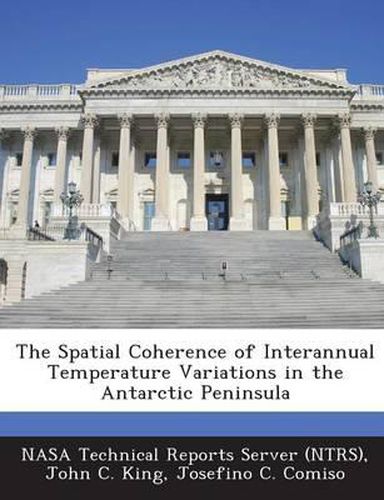Readings Newsletter
Become a Readings Member to make your shopping experience even easier.
Sign in or sign up for free!
You’re not far away from qualifying for FREE standard shipping within Australia
You’ve qualified for FREE standard shipping within Australia
The cart is loading…






Over 50 years of observations from climate stations on the west coast of the Antarctic Peninsula show that this is a region of extreme interannual variability in near-surface temperatures. The region has also experienced more rapid warming than any other part of the Southern Hemisphere. In this paper we use a new dataset of satellite-derived surface temperatures to define the extent of the region of extreme variability more clearly than was possible using the sparse station data. The region in which satellite surface temperatures correlate strongly with west Peninsula station temperatures is found to be quite small and is largely confined to the seas just west of the Peninsula, with a northward and eastward extension into the Scotia Sea and a southward extension onto the western slopes of Palmer Land. Correlation of Peninsula surface temperatures with surface temperatures over the rest of continental Antarctica is poor confirming that the west Peninsula is in a different climate regime. The analysis has been used to identify sites where ice core proxy records might be representative of variations on the west coast of the Peninsula. Of the five existing core sites examined, only one is likely to provide a representative record for the west coast.
$9.00 standard shipping within Australia
FREE standard shipping within Australia for orders over $100.00
Express & International shipping calculated at checkout
Over 50 years of observations from climate stations on the west coast of the Antarctic Peninsula show that this is a region of extreme interannual variability in near-surface temperatures. The region has also experienced more rapid warming than any other part of the Southern Hemisphere. In this paper we use a new dataset of satellite-derived surface temperatures to define the extent of the region of extreme variability more clearly than was possible using the sparse station data. The region in which satellite surface temperatures correlate strongly with west Peninsula station temperatures is found to be quite small and is largely confined to the seas just west of the Peninsula, with a northward and eastward extension into the Scotia Sea and a southward extension onto the western slopes of Palmer Land. Correlation of Peninsula surface temperatures with surface temperatures over the rest of continental Antarctica is poor confirming that the west Peninsula is in a different climate regime. The analysis has been used to identify sites where ice core proxy records might be representative of variations on the west coast of the Peninsula. Of the five existing core sites examined, only one is likely to provide a representative record for the west coast.